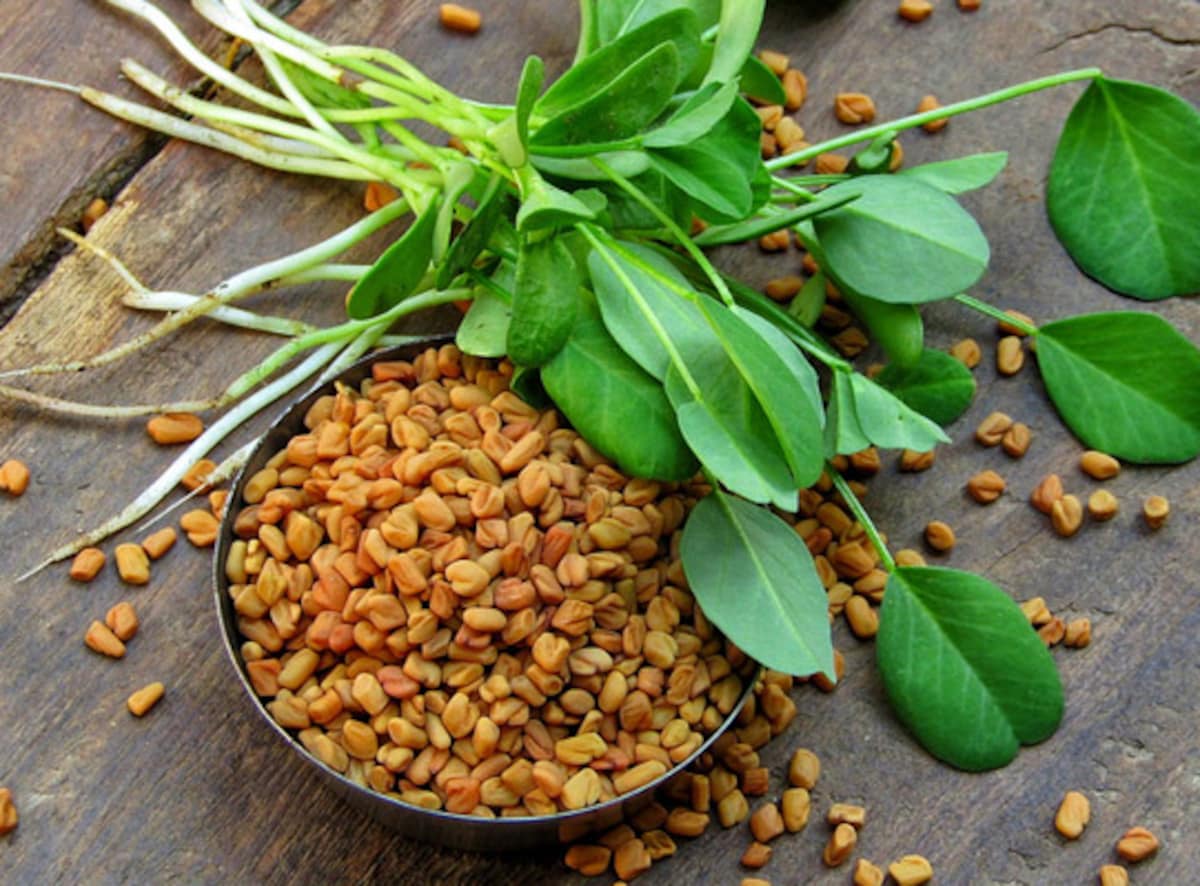Introduction
Foenegriek—more widely known by its English name, fenugreek (Trigonella foenum-graecum)—is a herb that has been valued for centuries in traditional medicine, cooking, and wellness practices. From ancient Ayurvedic remedies to modern-day nutritional supplements, foenegriek has consistently been celebrated for its potential to improve health, enhance flavor, and provide natural therapeutic benefits.
This article explores the history, uses, benefits, side effects, and scientific facts surrounding foenegriek, giving you a complete guide to understanding why this herb continues to play a significant role in both kitchens and clinics.
1. What is Foenegriek?
Foenegriek is an annual plant that belongs to the Fabaceae (legume) family. It grows in parts of Asia, the Mediterranean, and Africa. Its seeds and leaves are the most commonly used parts, each offering unique flavors and health-promoting compounds.
- Seeds: Small, hard, yellow-brown seeds with a slightly bitter taste.
- Leaves: Fresh or dried, with a mild, aromatic flavor often used in South Asian cooking.
The plant’s name “fenugreek” derives from the Latin foenum graecum, meaning “Greek hay,” since it was historically used as cattle fodder before its medicinal and culinary properties were widely recognized.
2. Historical and Cultural Importance
Foenegriek has been cultivated and used for thousands of years:
- Ancient Egypt: Seeds were found in the tomb of Tutankhamun, suggesting use in embalming and medicine.
- Traditional Chinese Medicine (TCM): Used to treat digestive issues, weakness, and imbalances in kidney health.
- Ayurveda: Celebrated as a warming herb believed to enhance digestion, increase strength, and support women’s reproductive health.
- Greek and Roman Civilizations: Used as a tonic, as well as a flavoring agent for food and wine.
This long-standing use across different cultures highlights foenegriek’s multifunctional role as food, spice, and medicine.
3. Nutritional Profile of Foenegriek
Foenegriek seeds are nutrient-dense, making them a valuable addition to the diet. They contain:
- Macronutrients: Protein, fiber, and healthy fats.
- Vitamins: A, C, several B vitamins, and folic acid.
- Minerals: Iron, magnesium, manganese, calcium, and potassium.
- Phytochemicals: Saponins, flavonoids, alkaloids, and polyphenols.
One tablespoon of foenegriek seeds provides approximately 3 grams of fiber, making it particularly beneficial for digestion and gut health.
4. Traditional and Modern Uses of Foenegriek
A. Culinary Uses
- Used as a spice in Indian, Middle Eastern, and North African cuisines.
- Fresh leaves (known as methi in India) are cooked as vegetables or added to flatbreads.
- Seeds are used in spice blends like curry powder and Ethiopian berbere.
- Sprouted seeds are consumed as a nutrient-rich garnish.
B. Medicinal and Therapeutic Uses
- Digestive Health: Traditionally taken to ease bloating, constipation, and indigestion.
- Women’s Health: Used to stimulate milk production in breastfeeding mothers.
- Diabetes Support: Believed to regulate blood sugar levels.
- Inflammation Relief: Applied as poultices for skin irritation and wounds.
- Men’s Health: Sometimes promoted as a natural testosterone booster.
C. Cosmetic Uses
- Used in hair care masks to reduce dandruff and promote hair growth.
- Ground seeds are used in skin scrubs and packs for acne and hydration.
5. Health Benefits of Foenegriek
1. Helps Manage Blood Sugar Levels
Multiple studies suggest foenegriek seeds may reduce blood glucose levels due to their high soluble fiber content, which slows digestion and absorption of carbohydrates. This makes foenegriek a potential supplement for people with type 2 diabetes.
2. Supports Lactation in New Mothers
One of the most well-known traditional uses is its ability to enhance breast milk production. Research supports this, showing that women who consume foenegriek tea or capsules often experience increased milk supply.
3. Boosts Testosterone and Libido
Foenegriek supplements are marketed for men’s health, with some studies showing improvements in testosterone levels, libido, and even physical strength. However, results vary, and more research is needed.
4. Improves Digestion
Rich in fiber and mucilage, foenegriek soothes the digestive tract, promotes healthy bowel movements, and may reduce acid reflux.
5. Heart Health Benefits
The herb may help:
- Lower LDL cholesterol and triglycerides.
- Improve HDL (good cholesterol).
- Support healthy blood pressure.
These effects contribute to overall cardiovascular wellness.
6. Anti-inflammatory Properties
Saponins and flavonoids in foenegriek demonstrate anti-inflammatory and antioxidant activity. This may benefit conditions like arthritis, chronic inflammation, and oxidative stress.
7. Weight Management
Foenegriek seeds may promote satiety due to their fiber content, reducing cravings and aiding in weight management.
8. Hair and Skin Benefits
- Foenegriek seed paste is applied to the scalp to reduce dandruff and stimulate hair growth.
- It hydrates skin and helps manage acne due to its antibacterial properties.
6. Scientific Studies and Evidence
- Diabetes: A study in the Journal of Diabetes and Metabolic Disorders (2017) confirmed that foenegriek consumption improved fasting blood sugar in diabetic patients.
- Lactation: Research in Journal of Alternative and Complementary Medicine showed foenegriek tea increased milk volume significantly compared to placebo.
- Men’s Health: A study published in Phytotherapy Research (2011) showed improvements in libido and testosterone markers with foenegriek supplementation.
While these results are promising, researchers emphasize the need for larger, long-term studies.
7. How to Use Foenegriek
Culinary Applications
- Tea: Soak seeds overnight and drink the infused water.
- Cooking: Add seeds to curries, soups, or bread doughs.
- Sprouts: Use raw in salads and sandwiches.
- Powdered Form: Mix into smoothies or yogurt.
Supplement Forms
- Capsules and Tablets: Standardized doses for specific health benefits.
- Powder Extracts: Added to shakes and health drinks.
- Oils: Used in hair and skincare products.
8. Side Effects and Precautions
While foenegriek is generally safe, it may cause:
- Mild digestive issues: bloating, gas, or diarrhea.
- Allergic reactions: particularly in people allergic to legumes (chickpeas, peanuts).
- Low blood sugar: risky for people on diabetes medication.
- Pregnancy caution: Large doses are not recommended, as they may stimulate uterine contractions.
Always consult a healthcare professional before beginning supplementation.
9. Fun and Lesser-Known Facts about Foenegriek
- In Ethiopia, foenegriek is used to flavor injera, a traditional sourdough flatbread.
- In India, dried leaves called kasuri methi add a signature aroma to curries.
- Ancient Romans fed foenegriek to livestock for better health and fertility.
- The seeds have a maple syrup-like aroma when roasted or soaked.
Conclusion
Foenegriek is more than just a kitchen spice—it’s a nutritional powerhouse and traditional remedy with modern scientific backing. From supporting blood sugar control and lactation to enhancing digestion, skin, and hair health, this versatile herb continues to prove its relevance across cultures and generations.
While supplements can offer concentrated benefits, incorporating foenegriek into your diet through food and teas is a safe, enjoyable, and flavorful way to experience its advantages. Like any natural remedy, it works best as part of a balanced diet and healthy lifestyle.


